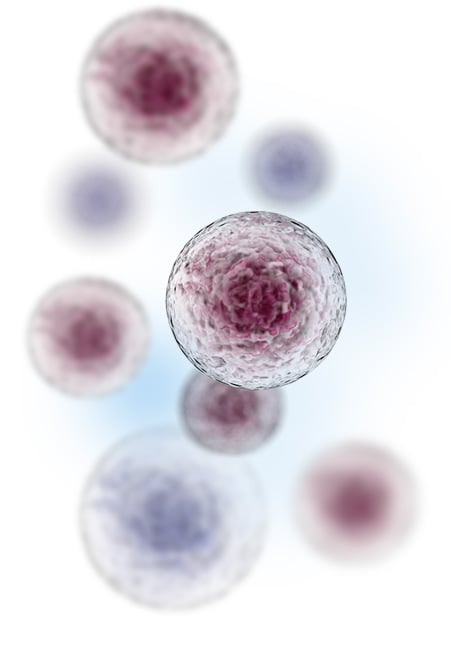Research Areas
Stem Cells & Differentiation
The human body develops from a single diploid cell called a zygote and contains at adulthood an estimated 85 trillion cells, of which more than 150 billion turn over every day. All of these cells originate from a tiny population of so-called “embryonic” and “adult” stem cells which uniquely possess a long-term self- renewal capacity and have the potential to differentiate into a variety of cell lineages. “Embryonic Stem Cells (ESC)” is a term commonly used to refer to a distinct cluster of pluripotent stem cells found in the inner cell mass of mammalian blastocysts (early-stage embryos). Their primary function is to give rise to cell lineages of all three germ layers. On the other hand, “Adult Stem Cells (ASC)” is one of several terms used to describe a diverse group of multipotent stem cells clustered in various niches throughout the body, particularly in loci with high cell turnover such as bone marrow, skin, and intestine, but also in sites with low cell turnover such as brain and pancreas. ASC, also known as somatic or tissue-specific stem cells, serve as a renewable source of specialized cells for tissue development, maintenance, and repair. Depending upon the prevailing conditions in their microenvironment, individual stem cells express distinct cell-surface proteins and display differentiation patterns which normally suit the needs of the tissue or organ in which they reside. Such stem-cell specialization is enabled by a battery of epigenetic regulatory factors which provide the means not only to arrest and maintain a particular stem-cell behavior, but also to modify it in response to changes in the cell’s microenvironment.


